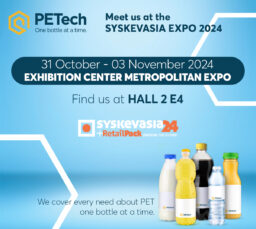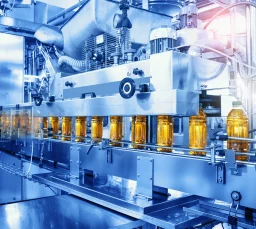
Introduction
The development of sustainable packaging solutions has become a top priority for many companies and consumers in recent years. Given the environmental impact of plastic waste, the search for alternative materials has become an urgent necessity. In this context, it is worth examining the trajectory of PET bottles.
Environmental Performance of PET Bottles
PET bottles are recognized as one of the most environmentally friendly packaging options for three main reasons. First, their production requires less energy compared to other materials such as glass. Second, they are lightweight, which reduces transportation costs. Third, they are recyclable.
However, PET bottles also present certain environmental challenges. A significant concern is that most PET bottles end up in landfills instead of being recycled. Depending on the country, only about 30% of PET bottles are typically collected for recycling. The rest remain in landfills or the environment for centuries, as they degrade slowly.
Another issue is that recycling PET bottles requires a substantial amount of energy. The recycling process involves washing, shredding, melting, and remolding the plastic bottles. This energy use offsets some of the benefits of PET bottle recycling.
Despite these drawbacks, PET bottles remain a more sustainable solution compared to alternative options when managed properly through higher recycling rates and cleaner production methods. With appropriate policies and initiatives, PET bottles can play a significant role in transitioning to a circular economy with less waste.
Recycling Initiatives
Recycling PET bottles has become a significant initiative in many countries. Global recycling programs have been established to reduce waste and reuse plastic. Significant steps have been made to develop recycling infrastructure and raise public awareness.
However, more must be done to achieve high recycling rates for PET bottles. Some policies and initiatives that could help include:
- Establishing deposit-return systems, where consumers pay an extra amount when purchasing bottles, which is refunded upon returning the bottles after use. This incentivizes higher recycling rates.
- Enacting extended producer responsibility laws, making producers responsible for collecting and recycling PET bottles, forcing them to design products with recycling in mind.
- Improving bottle collection infrastructure by placing more recycling bins in public spaces and increasing collection routes from homes and businesses.
- Conducting educational campaigns to raise awareness about the importance of PET bottle recycling. Schools, media, and community groups can play a role in changing consumer behavior.
With coordinated efforts from governments, businesses, and individuals, PET bottles can truly become a sustainable packaging solution. Recycling rates can be increased to optimize environmental benefits while minimizing drawbacks. Through responsible consumption and effective waste management systems, we can ensure that PET bottles have a place in the circular economy of the future.
Ongoing Challenges and Future Developments
While PET bottles offer benefits, challenges remain that must be addressed. Plastic leakage into oceans and overconsumption are worrying trends. However, through ongoing research and the development of new technologies, scientists and manufacturers are working on more sustainable and environmentally friendly packaging solutions.
To make PET bottles a truly sustainable option, several factors must be considered. Production processes need optimization to minimize environmental impact. Manufacturers should invest in renewable energy, energy-efficient equipment, and the recycling of waste heat for other purposes.
Bottles must also be designed for recyclability. This means using standardized PET grades, minimal additives, and easily removable labels. Sizes should allow efficient transport and storage to reduce impacts.
Collection and sorting systems need expansion to increase recycling rates. Initiatives for PET bottle collection in schools, workplaces, and public areas can enhance availability for recycling. Consumers also need incentives to recycle more.
Finally, innovation in PET recycling technologies is crucial. Scientists are exploring methods to produce new PET bottles entirely from recycled content. Achieving this goal at scale could create a truly circular system for PET bottle production.
With a holistic, systemic approach covering the entire lifecycle of PET bottles—from production to disposal—these packaging solutions could become sustainability benchmarks. Through research, innovation, and changes in production, design, collection, and recycling, PET bottles have the potential to set a new standard for environmentally friendly packaging.
Conclusion
PET bottles have been recognized as a valuable packaging option due to their environmental performance and recyclability. However, managing plastic waste remains a challenge. Through continuous efforts and environmental awareness, we can continue to improve the sustainability of product packaging and reduce environmental impacts. Countries and consumers must also take responsibility for proper plastic waste management through promoting recycling and sustainable consumption.




